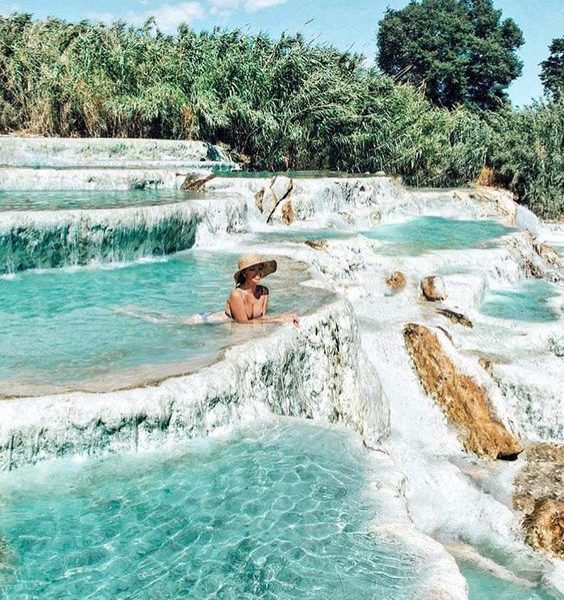From Hot Springs To Spas To Ancient Sites: Italy’s Top Natural ‘Terme’
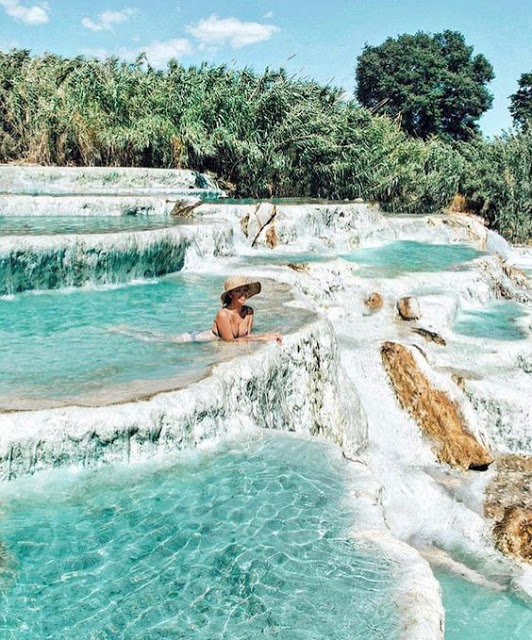 |
| Saturnia, Tuscany |
Italy is full of natural ‘terme.’ The mineral rich, Mediterranean terrain is geographically ideal for hot springs to spontaneously pop up from underground. These terme have been utilized by humans for health and happiness ever since the Etruscans in 700 BC. From 27 BConwards, their popularity increased with the Roman Empire’s influence and expansion. Today, locals and tourists still escape to the dazzling, untouched hot springs in the Italian countryside and near the sea. Many go to those that have been modernized into exquisite spas. Some of the ancient Roman bathhouses have become significant archeological sites.
In the times of Ancient Rome, bathing daily in the naturally hot water was a standard practice across all social classes. From the wealthy to the poor, ancient Romans bathed often and communally. The bathhouses, which were constructed using the spring water that bubbled up from below, were places for Romans to relax, heal, and socialize. Some Romans even conducted business and courted admirers in the baths.
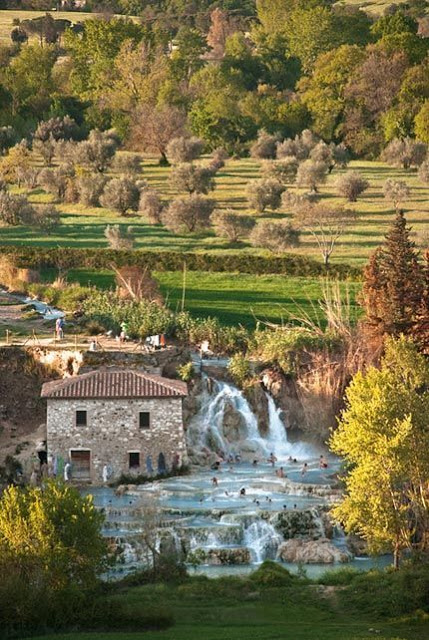 |
| Terme di Saturnia |
Above all, ancient Romans believed that for optimal health, one must bathe daily, eat well, exercise frequently, and have massages often. Today, the people of Italy continue to hold onto this ancient philosophy of well-being; Italians cook and eat fresh food at almost every meal, have high standards of cleanliness, and emphasize the importance of exercise for one’s health, as well as for ‘la bella figura.’ Literally translating to ‘the beautiful figure,’ this phrase is a mindset that not only encompasses the value of a person’s appearance and presentation, but also the significance of one’s behavior and approach to life.
If inspired by Ancient Rome, ‘la bella figura,’ and Italy’s natural phenomena, then it is time to visit Italy’s natural terme. First of all, choose the type of terme; the free hot springs in the wild, a modernized spa, or an ancient bathing site?
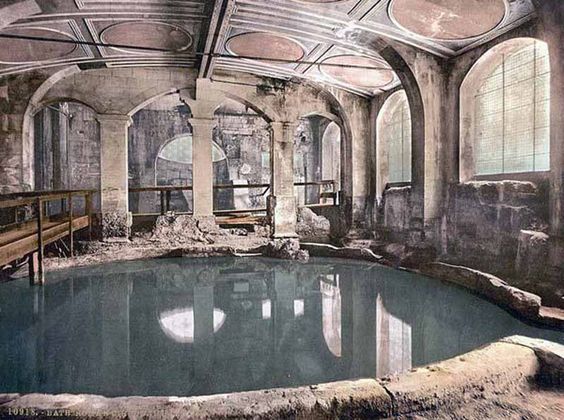 |
| Ancient Roman Baths |
Although terme occur in Sicily, near Rome, and further north, Tuscany definitely wins the crown for having the best, most beautiful, and most abundant natural hot springs in all of Italy. The luscious rolling hills hide many secluded terme near medieval hilltop towns like Siena and Tuscany’s capital and cultural gem, Florence. For travelers who choose to visit the Tuscan terme and want to save money, read these tips about Travel, Wine, and Food on a Budget in Tuscany.
The easiest way to reach many of the wild terme is by car. Learn about renting a car and driving in Italy, as well as Italy’s three best road tripshere. If bathing in the natural hot springs, remember to wear an old swim suit. In nature, the hot springs often have a strong, sulfurous odor that can linger. There is no need to bring a bathing suit when visiting the ancient sites.
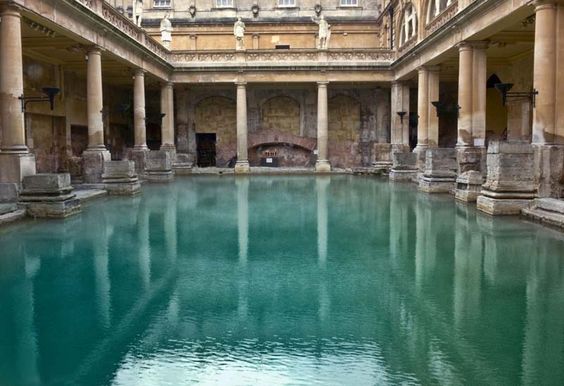 |
| Ancient Roman Baths |
The Ritual of Bathing in Ancient Roman
Inspired by the bathing routines of the Ancient Greeks, who believed that the naturally hot water cured the body of diseases and ailments, the ancient Romans constructed bathhouses with the same healing approach. Just like the Greeks, the Roman bathhouses had a social atmosphere, but were built more extravagantly, with larger baths. Later on, as the empire expanded, the Romans used an intricate series of aqueducts to supply people and the baths with water. They also built Roman style bathhouses in their Austrian, German, Hungarian, French, and English colonies, some of which are still intact today.
Bathhouses were extremely popular during the Rome Empire. In 354 AD, for example, almost 1,000 bath houses were listed in Rome. The largest public bathhouse, the ‘Terme di Diocleziano,’ allowed for 3,000 Romans to bathe at one time. Other than the large, state owned public bathhouses, there also were smaller, privately owned bathhouses, called ‘balnea.’ Each ‘balneum’ had a small entrance fee, which the average Roman man could easily afford.
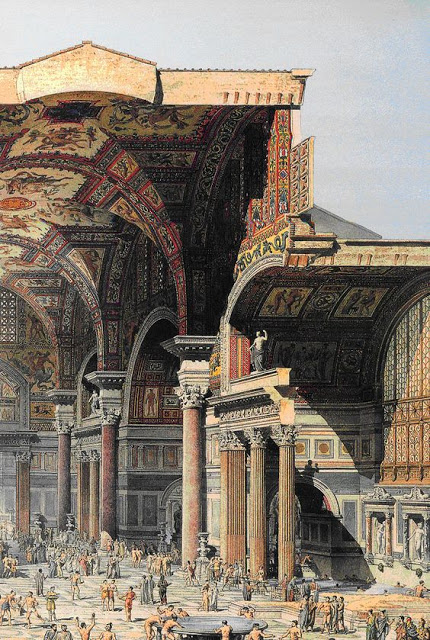 |
| Terme di Diocleziano |
Most Roman bathhouses had three entrances; one for men, one for women, and one for slaves. Slaves helped their wealthy owners with the bathing process. Women and men were often separated; however, in the first century AD, bathing together became widely accepted.
Typical bathhouses had a series of rooms; the ‘apodyterium,’ a changing room where people could store clothing, the ‘frigidarium,’ a cool room with a cold bath, the ‘tepidarium,’ a warm room with a comfortably tepid pool, the ‘caldarium,’ a heated, sauna-like room with a hot bath, and the ‘laconium,’ a room to rest and dry off in. After sweating in caldarium, bathers would go back to the tepidarium to exfoliate their skin using natural oils or metal instruments. Romans were adamant that the hot waters could heal the body.
Not only did the bathhouses become community centers, they became hubs for Roman culture. Besides the baths, many bathhouses had performances, libraries, gardens, areas for athletes to exercise, and shops selling produce, perfume, and other goods. The baths also had political influence. To earn the public’s favor, new emperors often granted free admission to all bathhouses for several days at a time. As the empire declined, so did the Roman baths; however, some of the sites can still be explored today.
Ancient Roman Bathhouse Sites Worthy of a Visit
Terme di Caracalla of Rome
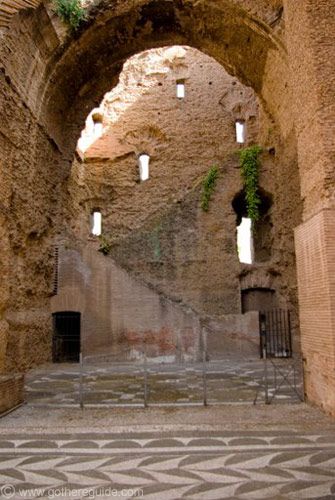
Originally initiated by emperor Septimius Severus and later completed by his son, emperor Caracalla in 216 AD, the ‘Terme di Caracalla’ was Rome’s second largest public bathhouse. The baths were supplied by the Roman aqueduct, ‘Acqua Nova Antoniniana,’ which was suppled by the larger, ‘Acqua Marcia.’ The sixty-two acre grounds included areas for reading, walking, and lounging as well as bathing. The complex was the second of its kind to have a public library, with texts in both Greek and Latin. During the height of the Roman Empire, it was a bustling space for Romans to socialize, exercise, and relax in.
The ruins of this immense bathhouse are well-preserved and sit near ‘Circo Massimo,’ not far from other historical sites like the Colosseum and the Forum. There is an entrance fee of €8.00 and it is open Monday to Saturday from 9:00am to 6:00pm. The Terme di Caracalla is closed on Sundays.
The Suburban Baths of Pompeii
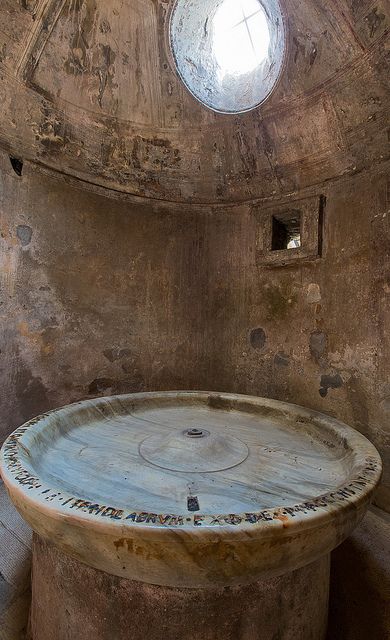 |
| Pompeii Baths |
The ancient city of Pompeii and its public bathhouse were destroyed when Mount. Vesuvius erupted in the summer of seventy-nine AD. In Pompeii’s Suburban Baths, women and men shared the ‘apodyterium’ or changing room. Erotic paintings were discovered on the walls of this room, suggesting that topics like nudity and sex were not crude or offensive for ancient Romans. Because the small erotic paintings are in a series above what most likely were boxes for clothes, it is thought that each erotic scene served to remind bathers which box they had put their clothes in.
Discovered in 1958, the Suburban Baths have since been restored. Like most of Pompeii’s sites, they open at 9:00am and close in the evening. The Suburban Baths and other sites are best experienced with a guided tour of Pompeii. The knowledgeable tour guides can explain the mysteries of the city and its tragic, instantaneous demise.
Pompeii is situated just south of Rome and near the vibrant port city of ‘Napoli’ or Naples. When visiting Pompeii, stay in Naples for a few days to soak up the sun, and eat the mouthwatering ‘pizza napoletana’ and other delicacies. Use this guide, The Perfect Weekend in Napoli, to plan how to see both Naples and Pompeii.
Healing Hot Springs Found in the Wild
Cascate del Mulino, Tuscany
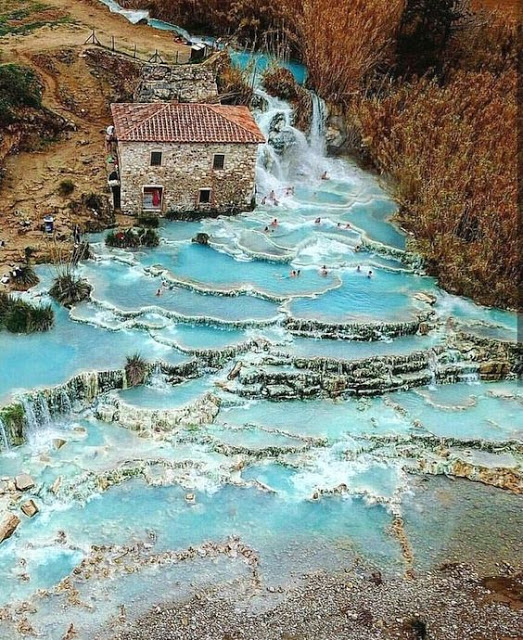 |
| Mill waterfalls in Saturnia, Tuscany |
In Tuscany’s Saturnia, the captivating ‘Cascate del Mulino’ are in between Rome and Florence. According to legend, Saturn, the Roman god of harvest, created these hot springs to appease humankind, who were fighting with each other too much. Upperclass ancient Romans used to travel two hours south to utilize the healing powers of these natural baths. The hot baths certainly have a calming effect; the pools are rich in calcium, carbon, and sulfur, all of which are great for the skin. The cascading water has created tiers of hot pools that gleam white because the minerals in the spring water have changed the composition of the rock.
Terme di Petriolo, Tuscany
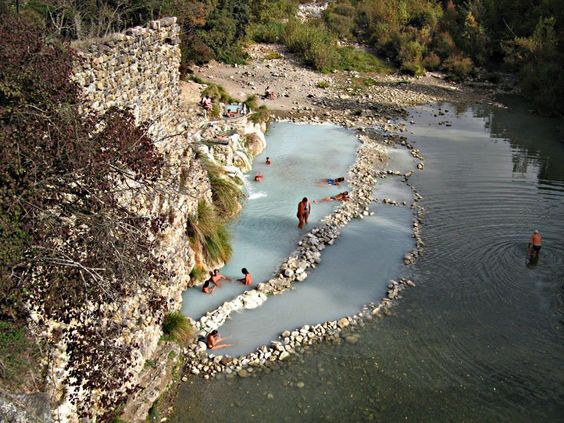 |
| Bagni Di lucca – Terme di Petriolo |
The ‘Terme di Petriolo’ are a few hours south of Florence and Siena. These natural baths were frequented by ancient Romans and rich Tuscan families. The small pools filled with warm water, which empty into the idyllic Farma River below, are among lovely hills filled with trees and wild flowers. If bathers get too hot in the terme, the river offers a refreshing respite and the foliage creates lots of shade.
Bagni San Filippo, Tuscany
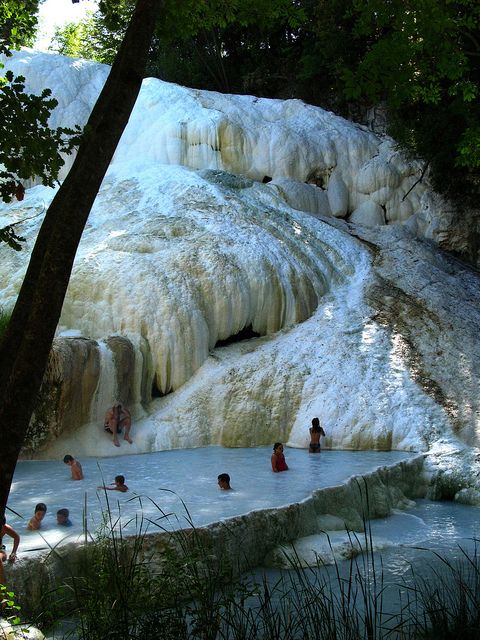 |
| Terme di San Filippo hot springs in Tuscany |
It is absolutely worth the hike through the forest to Tuscany’s picturesque, ‘Bagni San Filippo.’ One of the most beautiful hot springs in Italy, ‘Il Fosso Bianco,’ is surrounded by smooth, white calcium-carbonate rock, which has been altered because of the mineral rich, piping hot spring water. The water cascades down the white rock walls into a series of white pools. Tall pines sway in the background.
Terme di Sorgetto, Island of Ischia
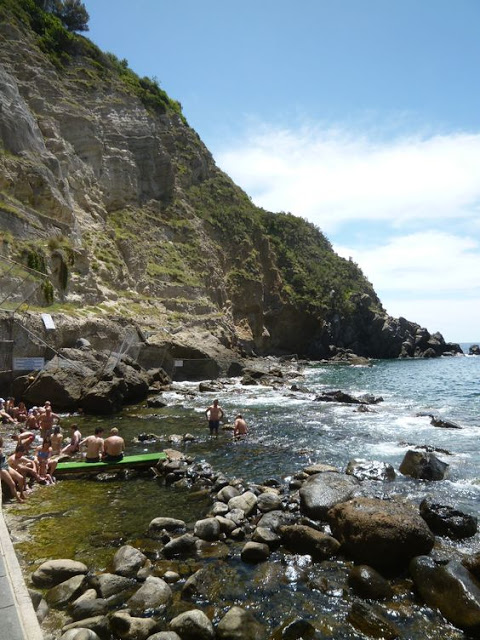 |
| La Baia di Sorgeto |
Located in the Bay of Naples in the region of Campania, Ischia is the biggest island of the Phlegrean group. The hot, volcanic water that bubbles up from the sea uniquely creates the island’s ‘Terme di Sorgetto.’ Naturally formed rock pools, which have been carved out by the sea and the spring water, mean that visitors can choose between pools of different temperatures. To get to the hot springs, be prepared to climb down a cliff and walk over hot, volcanic rock.
If feeling inspired to explore more islands, read out guide toItaly’s Best Islands.
Terme di Vulcano, Island of Sicily
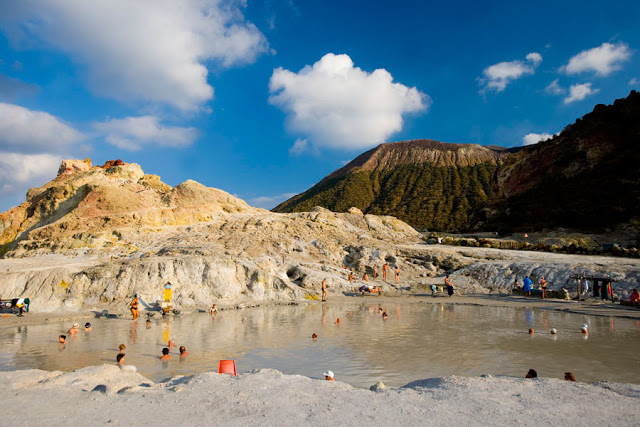 |
| Terme di Vulcano |
At the base of Mount. Etna, the active volcano on Sicily, Italy’s largest island, are the ‘Terme di Vulcano.’ Visitors can sense the closeness of the volcano; there are small holes surrounding the pools which smoke and gurgle with volcanic activity. The hot springs secrete a grey mud that is good for soothing joint pain. Bathers often coat themselves in the mud and then wait for it to dry, so that their skin absorbs the nutrients from the minerals.
Superior Spas Made From Hot Springs
Terme di Bormio: Bagni Nuovi, Lombardy
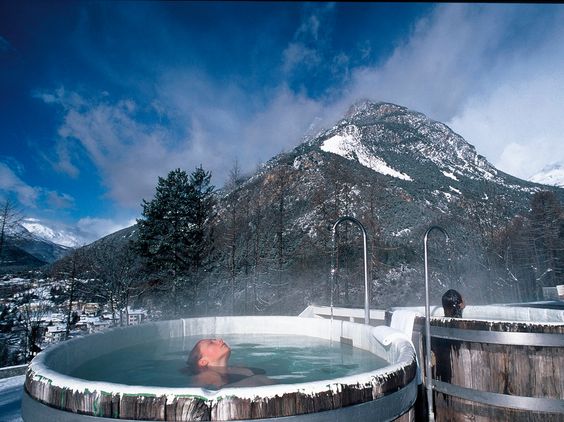 |
| Terme di Bormio, Bormio |
The ‘Terme di Bormio: Bagni Nuovi’ Spa in Stelvio National Park in Italy’s northern region of Lombardy is surrounded by the stunning, snow capped mountains. It is the largest spa in the Alps. Along with a seductive natural backdrop, it has seven outdoor pools, two outdoor saunas, indoor saunas, a heated cave, relaxing gardens, and massage rooms.
Opening Hours: 11am to 8pm Sunday to Thursday, 11am to 9pm Fridays, 11am to 11pm Saturdays
Terme di Stigliano, Lazio
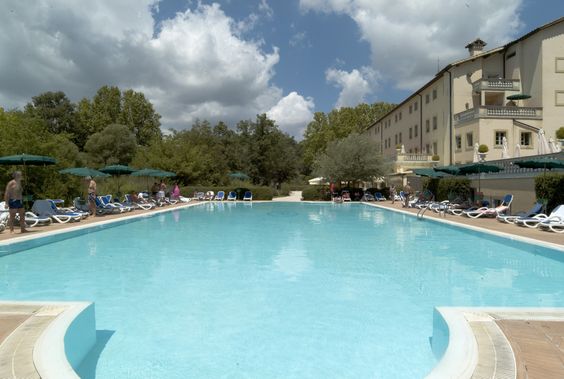 |
| Terme di Stigliano |
Only a ninety minute drive from Rome’s city center, the delightful and relaxing ‘Terme di Stigliano’ spa is powered by five natural hot springs. It offers guests soothing natural spring water, moisturizing mud massages, a rejuvenating steam cave, and a serene escape from the busyness of the Eternal City.
Opening Hours: 9am to 7pm daily
Terme dei Papi, Lazio
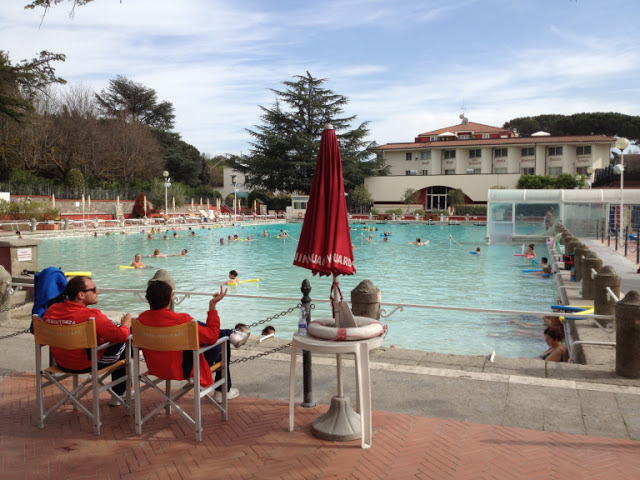 |
| Thermal baths of Viterbo |
The enchanting natural spa, ‘Terme dei Papi’ is only a little further away from Rome than Terme di Stigliano. It takes about an hour and fifteen minutes to get there by car. The spa uses spring water from the ‘Terme del Bullicame’ and has exfoliating mud, a healing cave, and a thermal pool inspired by ancient Roman baths.
Opening Hours: 9am to 7pm daily except Tuesdays, plus 9pm to 1am on Saturdays
From all of us at Roman Candle Tours, we hope you feel rejuvenated after reviewing Italy’s terme and learning about the bathing rituals of Ancient Rome. Enjoy visiting Italy’s natural hot springs!

If you liked this article, read also “A SHOPPER’S GUIDE TO ITALY“
